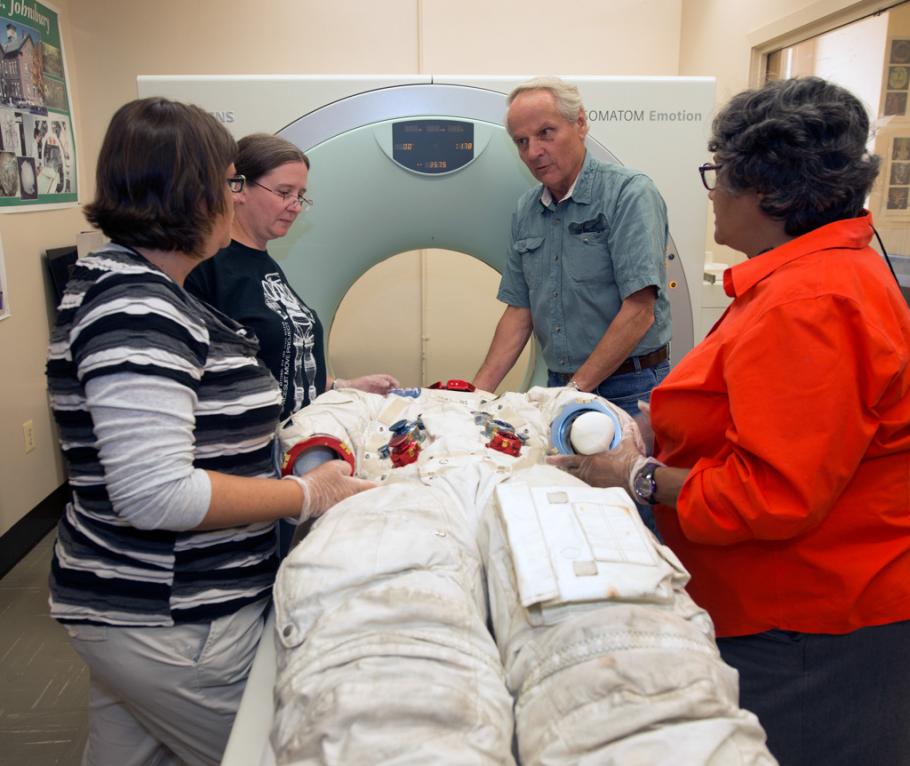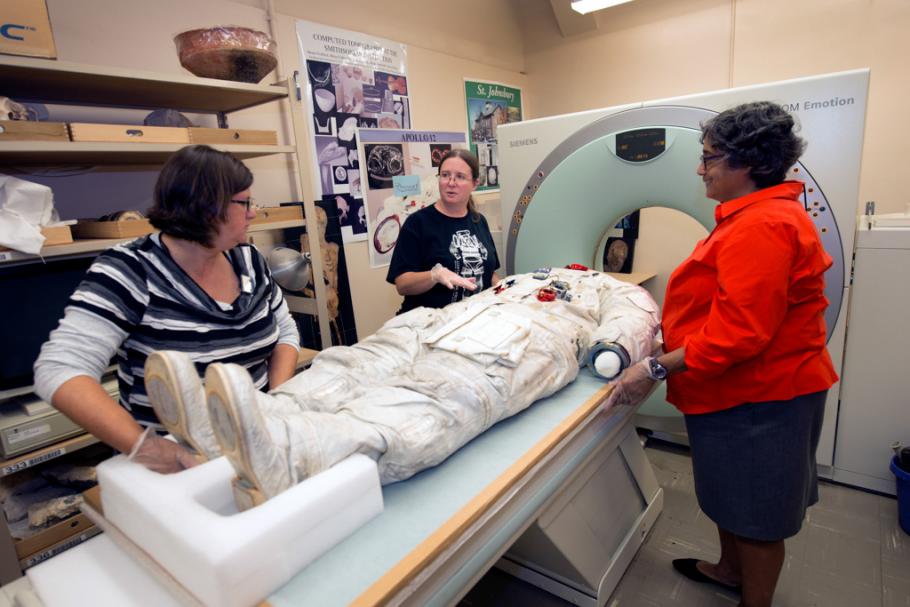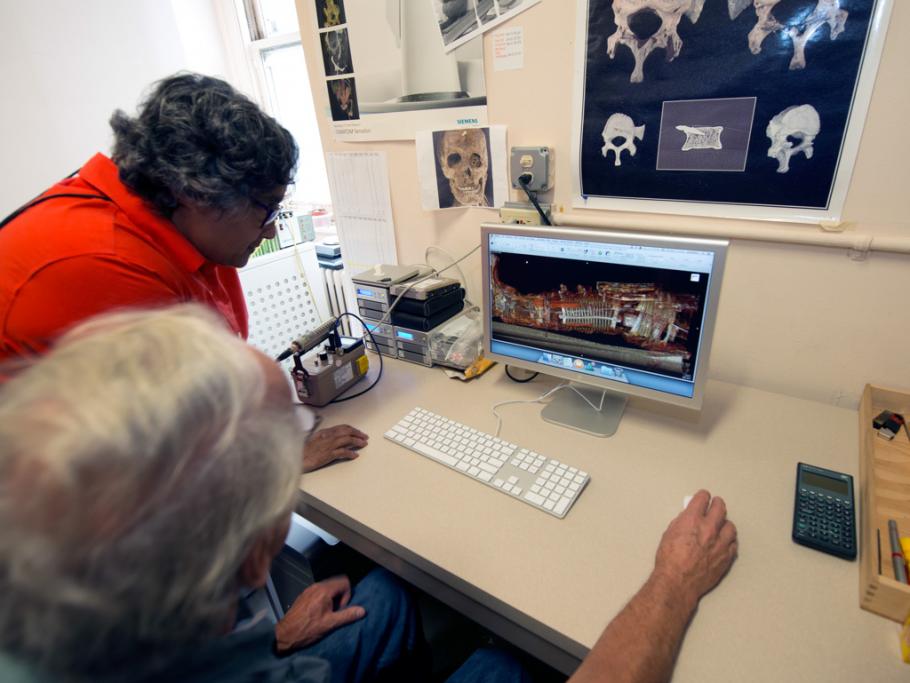Museum staff recently transported Neil Armstrong’s Apollo 11 spacesuit to the National Museum of Natural History for a CT scan. Curator Cathleen Lewis shares her experience as one of those staff members and explains how CT scanning can help in preservation efforts.
On Tuesday, October 7, Museum staff took a trip across the National Mall to Natural History’s Anthropology Department’s Siemens CT scanner to work with anthropologist Bruno Frohlich to conduct a scan of Neil Armstrong’s Apollo 11 spacesuit. National Air and Space Museum conservator Lisa Young and Jeannie Whited traveled with the star of the day, Armstrong’s spacesuit, from the Steven F. Udvar Hazy Center in Virginia.
Neil Armstrong's spacesuit arrived at the Museum in the early 1970s after NASA taken it on a nationwide tour. The spacesuit immediately went on display, first at the Museum's original location in the Smithsonian’s Arts and Industries Building and then in the Museum's present location inside the Apollo to the Moon gallery in July 1976. The suit remained on display for 30 years until deterioration from long-term display and handling mandated its return to storage for stabilization in January 2006. Periodic inspections had shown that the internal, rubber bladder layer that held precious oxygen inside the suit had become rigid and brittle, and the layers of the white thermal protective cover layer had begun to make crackling sounds when moved. We didn't know precisely what was going on inside the suit or the extent of the damage so stabilization in a cool, dry environment was the only alternative to risking additional deterioration.
At the time, our ability to find out precisely what was going on inside the suit was limited. We could peer inside the suit with flashlights and compact cameras to examine the accessible portions of the rubber bladder. Our photographers could take detailed film and digital images of the exterior. One or our colleagues at the Smithsonian Museum Conservation Institute could produce x-rays that revealed the metallic structures inside the suit. None of these imaging options could reveal the hidden details of the internal layers. The only plausible alternative was to perform a CT scan of the spacesuit. Computerized Tomography (CT) is a technology that uses computer-processed radial x-rays to produce slices of the scanned object, allowing us to see inside. Instead of seeing a flat x-ray of the suit, a CT scan made it possible to image perpendicular slices of the suit and to discern the layers. Our first attempt to use this technology was in 2006, but the CT scanner that the Smithsonian owned had too small of a diameter to fit a spacesuit. In 2011, Natural History received a new, larger diameter CT machine that would fit the suit. Bruno has demonstrated its capacity by scanning instruments from the Museum of American History's musical collection and the collection of frozen Great Apes that primatologists have collected at Natural History.
Our immediate motivation for setting up an appointment to use the new Siemens scanner was the progress on plans to reimagine the Apollo to the Moon gallery as part of the Museum’s revitalization. The new gallery will focus on humankind's fascination with the Moon and feature the one time that humans have walked on its surface. Under ideal circumstances, that gallery would feature Neil Armstrong's suit, as fully assembled as possible to recreate the moment in which he became the first human to step foot on another world. In order to return the suit to public display, we had to find out what was going on inside the layers of the suit. Once we have that knowledge then we will figure out how to design a rigid display support that would not contribute to damage to the suit while holding its weight. This new generation of display supports will also carry the air circulation of a climate system that would match the climate of our storage conditions. This is a start on a long journey of conservation for Neil Armstrong's spacesuit and its return to exhibit. As we learn to work with the datafiles that came out of the scan, we will find out more secrets between the layers. This image is a teaser of sorts. It is a false color image that shows the densities of the materials in the suit. The lightest colors are white. The dark reds are the least dense materials.




